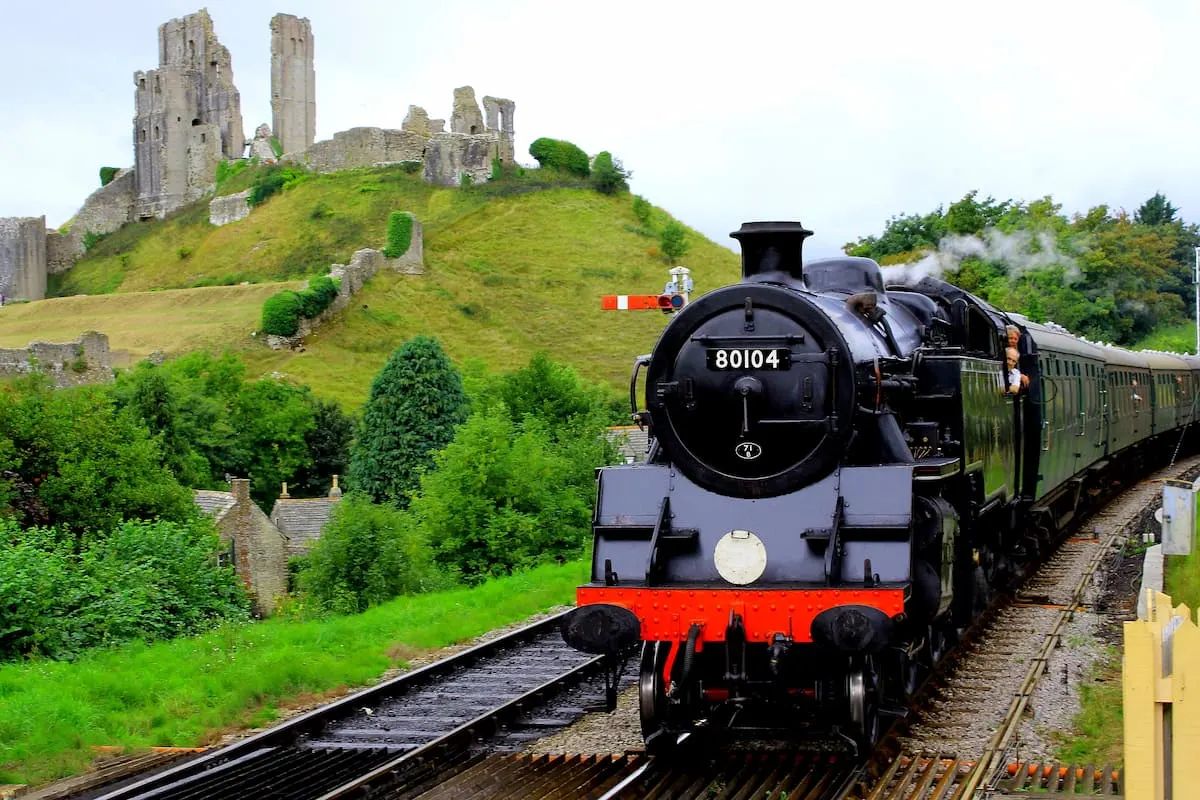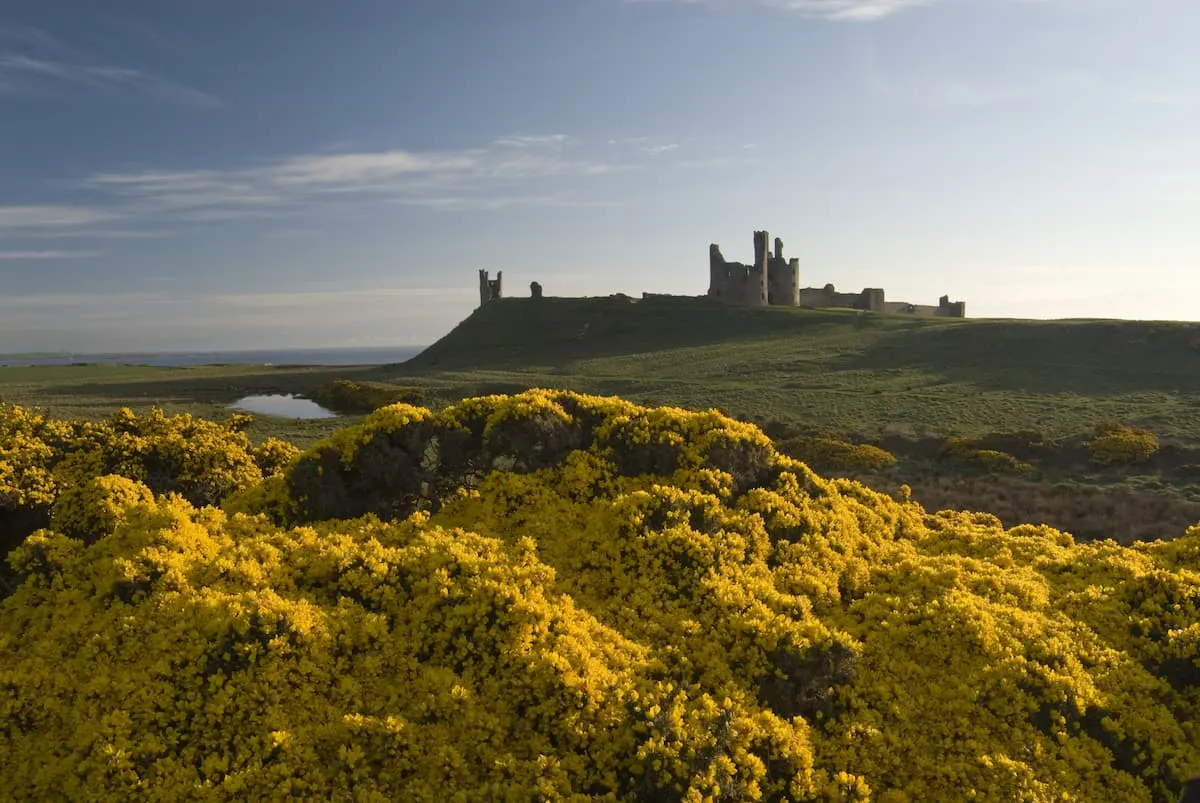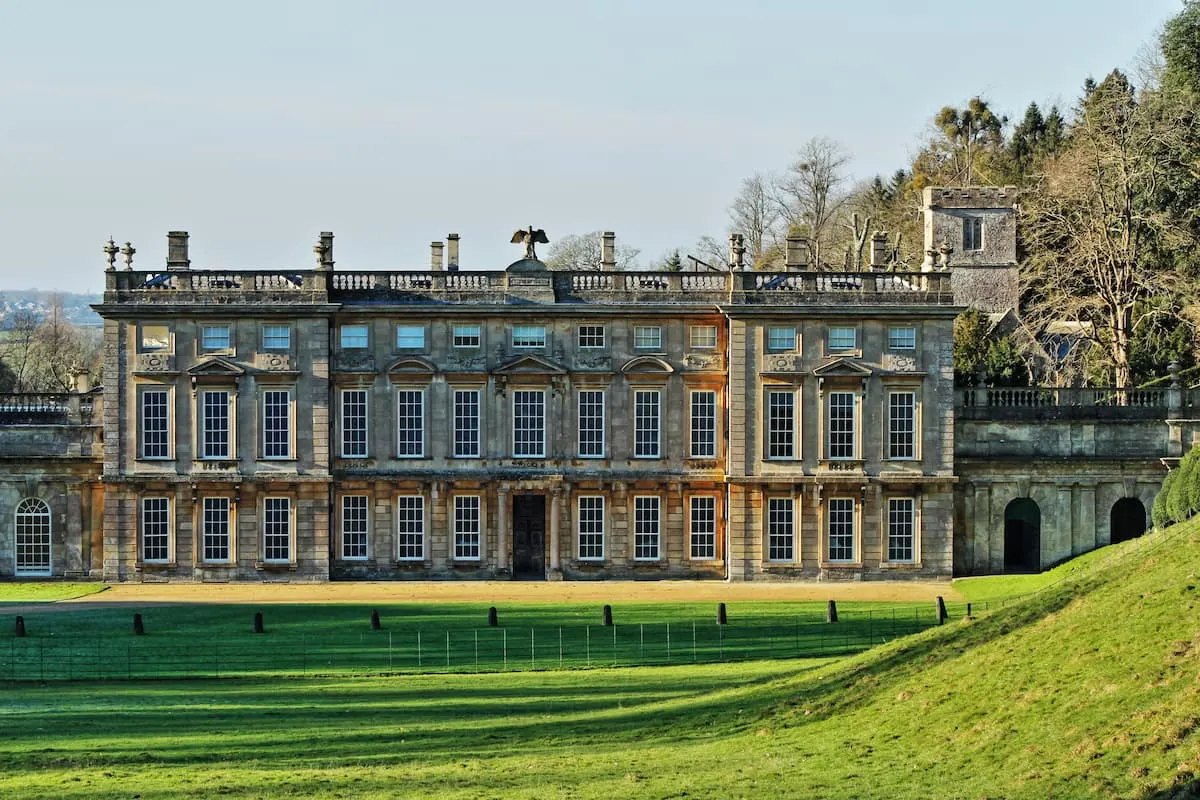National Trust locations are a great way to explore some of Britain’s most beautiful landscapes and historic buildings. From castles, gardens and stately homes to ancient monuments and wildlife reserves there’s something for everyone.
It is the largest charity in Europe for protecting historic places, buildings and the countryside. They help maintain these properties and are able to from us visiting, membership fees and donations.
The Trust looks after miles of coastline, common-land and less important historical properties that are of national importance and interest to Britons and overseas visitors alike. They are one of the biggest land and building owners in Great Britain.
Disclaimer: Hi! this post may contain affiliate links which will take you to online retailers that sell products and services. If you click on one and buy something, I may earn a commission, see my Affiliate Disclosure for more details.
This bucket list of the best National Trust places is a great way to start exploring. Why not grab a yearly membership if you live in England or one of the Touring Passes for travellers.
National Trust Houses
Belton House
Most beautiful grounds

Explore the gardens of this beautiful Grade I listed 17th-century mansion located in the parish of Belton, Lancashire.
Built between 1685 and 1688 by Sir John Brownlow, Belton House is the perfect spot for a warm summer day exploring the vibrant gardens and surrounding wooded areas.
Discover the fascinating history of this ancient building by taking a walk through the house itself before visiting the stunning lake house. The kids will fall in love with the fabulous adventure playground and the cryptic maze. But will they ever get through it?
Entry to this site is free for National Trust Education Group Members. However, there is a small fee to pay for facilitated sessions that range between £1-£3 per child.
Petworth House
Fascinating Art

Located in the parish of Petworth, West Sussex lies Petworth House. This 17th century Grade I listed building is home to some of the most stunning pieces of art which are proudly displayed around this magnificent country manor.
The remarkable collection includes work by Flemish Baroque artist Van Dyck, Gainsborough, Reynolds and Turner and reflects a time of survival and success through the Napoleonic Wars and the Gunpowder Plot.
Petworth Park is home to over 900 fallow deer, which can be seen resting and grazing around the vast 700-acre parkland.
The free interactive Park Explorer can be used to uncover details about the land and its future projects. Let the children get involved with a trip around the artist trail to sketch away with a sketchbook and coloured pencils provided by the team at Petworth House. There is an on-site café; however, it is recommended to take a picnic as queues can be long, particularly in the summer months, and the children may become impatient!
West Green House
Breathtaking gardens
Get prepared to be amazed by the stunning gardens that span across ten acres of land. West Green House is an 18th-century country house situated in leafy Hampshire.
Over the last twenty years, the garden has been revamped by Australian garden designer Marylyn Abbott, who restored the gardens to a truly exceptional standard.
Take a walk through the tranquil gardens to see some impressive features and vibrant flowers. Be sure to pay a visit to the walled gardens to witness the interesting layout and check out the vegetable and spice garden to see how easy it can be to grow your own veg!
Unfortunately, West Green House is not open to the public as both the house and the garden are privately owned. You can use your National Trust membership for free entry, but guest passes are not valid.
Click here to see a list of properties that are exempt from the Guest Pass promotion.
Chastleton House And Garden
Interesting history
Owned by the National Trust since 1991, this Grade I listed Jacobean house can be found in the beautiful county of Oxfordshire. With its impressive topiary and scenic gardens, Chastleton House can be enjoyed by young and old for a truly memorable day out.
Both the house and garden have been slowly restored over the past 30 years, and it is true to say that this charming country mansion is a time capsule of living history. The National Trust team has done a magnificent job of preserving Chastleton back to the condition in which it was found.
Areas of the house are over 400 years old and are deemed uninhabitable. Therefore access is prohibited.
While there are no on-site catering facilities, feel free to make a stop at the nearby Church of St Mary for a spot of tea and cake.
Fenton House
Most bizarre relics
Fenton House is a 17th-century mansion, previously known as Ostend House.
Not much is known about the owners that once lived here. However, the previous name suggests connections to Flemish trading and was most likely the property of a City merchant.
The house is based in Hampstead, just a handy 5-minute walk from the tube station. Stroll up the narrow path to discover this charming detached house decorated with ancient works of art, countless porcelain and china ornaments and (bizarrely) a variety of harpsichords dotted around the place.
Visit the attic floor for stunning views of the city before exploring the apple orchard and lush, well-maintained gardens. Bask in the sunshine or enjoy a picnic in the vibrant sunken garden of this wonderfully historic building.
Antony House
Still occupied by the owners

Source: Chris Moncrieff Dreamstime.com
Antony House is still very much lived in by the Carew-Pole family, who kindly allow visitors to view areas of this historic mansion. This Grade I listed building is situated between the Cornish towns of Torpoint and (aptly named) Antony and was built in the 18th century.
Film director, Tim Burton, filmed parts of Alice in Wonderland at Antony House after searching for a “perfect, pocket-sized mansion” with “intimate interiors” and “landscaped gardens”. Luckily, Antony House ticked every box!
The house itself is filled with a marvellous collection of family paintings along with interesting modern pieces. Refreshments are available in the lavish tea room, where tables are placed in the arches so guests can overlook the house.
Explore the fabulous combination of formal gardens and wild woodland that are particularly stunning in the warmer months when the vast array of flowers bloom.
Castles
Corfe Castle
Most Scenic

Source: Edwin Broersma Dreamstime.com
This charming castle sits in the village of Corfe in the Isle of Purbeck and has dominated its spot for over 1000 years.
Historically, it has been a Saxon stronghold, a fortress for the Normans, a royal palace and a grand family home. Shaped by warfare, the ruins are a product of the English Civil War. The destruction of Corfe Castle is seemingly bittersweet, as it is one of the most beautiful attractions along Devon’s Jurassic Coast.
The children will love taking part in a series of medieval games such as hand tennis, soft archery and Nine Men’s Morris, a traditional board game.
Visitors can explore the sea views and amazing wildlife along the Purbeck coast.
Enjoy a cream tea in the courtyard before checking out the adorable model village to see how the castle would look in a state of completion. The tour of Corfe Castle takes around an hour to see everything and is a great attraction to do some serious sightseeing.
Bodiam Castle
Great selection of activities

This 14th-century medieval moated castle can be found in Robertsbridge, West Sussex. The splendid ruins are interesting to explore, and medieval activities are available.
The castle was built in 1385 for Sir Edward Dallingridge and his wife Elizabeth Wardedieu to defend the surrounding area during the Hundred Years’ war.
While the insides of the castle are uninhabitable, the outside has survived well over the years and is an incredible ancient monument. Join in the fun summer holiday activities where both children and adults can take part in the games.
Why not try your hand at mini jousting or archery? Learn more about this epic time in history through exciting storytelling and armour demonstrations. The new Castle Characters trail is an exciting journey through history to find out more about the people who worked and lived at Bodiam Castle.
Entry is from 10:30 am until 5 pm, and there is a charming little tea room serving refreshments so you can take a break to admire the beautiful setting.
Dunster Castle and Watermill
Fabulously maintained
Throughout its history, Dunster Castle has been owned by just two families. Originally a fortress, the castle was eventually turned into a family home and has been in the hands of the National Trust since 1976.
A fun fact about Dunster Castle is that in the 1470s, the bill for repairing the gateway cost just £1 and is still standing today!
Explore the working mill and its traditional machinery, which spans across three floors. Over 18 tonnes of wholegrain flour has been produced here since it opened in 2014 and is available to purchase at the watermill.
The grand Dunster stables date back to the 17th century and are one of the earliest surviving stable blocks owned by the Trust.
Once you have finished exploring the castle and its fascinating history, you are free to relax in the beautifully maintained gardens with a stunning array of tropical plants. Refreshments are available at the charming outdoor pop-up café, or you can travel into nearby Dunster Village for a browse.
Lindisfarne Castle
Best views
This striking monument has an interesting backstory to it which begins when it was built in 1550.
Historically, the castle was constructed to house soldiers, who used the building for gunnery practice and to watch out for incoming trouble across the horizon.
It wasn’t until 1901 when it was taken over by Country Life magazine owner, Edward Hudson who used the help of a young architect, Edwin Lutyens, that the castle was transformed into a holiday home.
While many of the original features were lost during the renovation period, if you look closely, you will still find remains of the original layout. The dining room is probably the best surviving example, and there is also an original staircase that leads to the Upper Battery.
Getting to the castle requires crossing a tidal causeway, so it is recommended to check when it is safe to cross. Hopefully, the weather is on your side when visiting, as the Holy Island views are simply unmatched.
Dunstanburgh Castle
Most accessible ruins

Located on a remote headland of Northumberland, Dunstanburgh Castle is a sight to behold sitting proudly on the coastline.
The history dates back to 1313 when the Earl Thomas of Lancaster created it as a fortress which, according to research, was built on a far grander scale than originally proposed.
From a distance, it doesn’t look like much until you reach it, which requires a mile-long walk from the nearby village of Craster. However, don’t let the walk put you off if you have young children, as they will love exploring the rock pools as well as various nooks and crannies on the way up.
The majority of the ruins are accessible, with the gatehouse being the most intact, so there is plenty to explore.
Dunstanburgh Castle has featured on many British travel programmes for its beautiful setting and fascinating history. The exceptional views are a favourite among visitors, and if you look closely, you will also find kittiwakes and fulmars nesting in the cliffs below.
Parks
Osterley Park and House
Most lavish house

Source: Marina Endermar Dreamstime.com
This stunning Georgian country estate dates back to the 1570s and is located between the London boroughs of Ealing and Hounslow.
Remodelled between 1761 and 1765, parts of the estate are Grade I and II listed with the park labelled as Grade II.
The neoclassical interiors of Osterley House are immediately apparent upon entry, including Roman statues, Greek pottery and ceramics, which seemed to be a craze during mid-Georgian times.
Lavishly decorated with historical paintings, tapestries and endless delicate ornaments, the property is truly remarkable and has been maintained extremely well over the years. Tours of the house are self-guided but do not hesitate to ask a member of staff for more information.
The formal gardens are a great spot for a picnic or a bike ride, and the children will be kept busy with the adventurous play trail and fun activities such as table tennis. Finish off the day with a visit to the café for a cup of tea before visiting the gift shop for some souvenirs to remember your day out.
It goes without saying that Osterley Park and House is one of the best National Trust places to visit with its vast array of relics, stunning architecture and fascinating history.
Basildon Park
Best walks

Source: Alanjeffery Dreamstime.com
This country house is a Grade I listed building nestled between the picturesque villages of Upper Basildon and Lower Basildon.
Basildon Park estate was first purchased back in 1771 by a man named Francis Sykes. Sykes demolished the original house and employed an architect to build the magnificent mansion we see today.
During the First World War, the property was used as a recuperation unit for soldiers where they could gain strength, learn new skills and provide the local community with materials. It also came in handy in the midst of the Second World War when it was used for D-Day training and, later, a prisoner of war camp for the Italians and Germans.
The house was given to the National Trust in 1978 and is a popular tourist spot for adults and children of all ages. Explore the history of Basildon Park by taking a step inside to view ancient paintings and grand furniture.
The impressive gardens adorned with climbing roses and vibrant flowers are the perfect spot for a picnic. Look out for the Copper Beech tree at the front of the house which was planted in 1850 and holds memories of romance.
There are four different walkways to choose from if you fancy a stroll through the parkland, which are enjoyable whatever the season.
Dyrham Park
Hidden gem

This Baroque country mansion lies in the village of Dyrham, South Gloucestershire.
There is evidence from archaeological excavations to show that Dyrham Park goes back as far as the Bronze Age, although the house we see today has had many renovations over the years.
The house was first opened to visitors in 1961 after being transferred to the National Trust. Since then, the house has been well preserved and is a hidden gem among the hustle and bustle of life as we know it.
Step inside this grand manor to find out more about the founder of Dyrham Park, William Blathwayt. View the collection of stunning artwork and furniture to get a taste of the 1600s.
Take a woodland walk or a tour of the gardens (it doesn’t matter if you aren’t very green-fingered!). The children will love the wooded play area complete with play tractors, and you can end the day with ice cream from the on-site café.
Tatton Park
Best place for children

You won’t be stuck for things to do at one of the most historic estates in the UK. Tatton Park is located in the town of Knutsford, Cheshire.
With over 50 acres of gardens, an authentic 1930s working farm, and fun outdoor activities, a visit to Tatton Park will ensure a memorable day out with the family.
The history of Tatton House is still unfolding and is home to over 8000 books rendering it one of the most important library collections owned by the National Trust. Uncover centuries of history through ancient collections of art and ceramics with tales about what life was like for the workers.
Discover the beauty of the walled kitchen garden, the products of which can be purchased at the on-site garden shop. The idyllic Japanese gardens are truly magical, and you are bound to see plenty of deer roaming the woodland. Be careful not to scare them!
The children will be worn out by the end of the day after constructing a fortress at the den building zone and figuring their way out of Maize Maze. They will also love holding the newly hatched chicks and feeding the fluffy lambs at the working farm.

Kat
Hi, I'm Kat, an Australian that moved to London in 2013 to start a new adventure. What a roller-coaster that was! I love helping others move to the UK and people explore the world! I’d be honoured if you’d say, “Thanks!” with a £3 coffee on Ko-fi.

